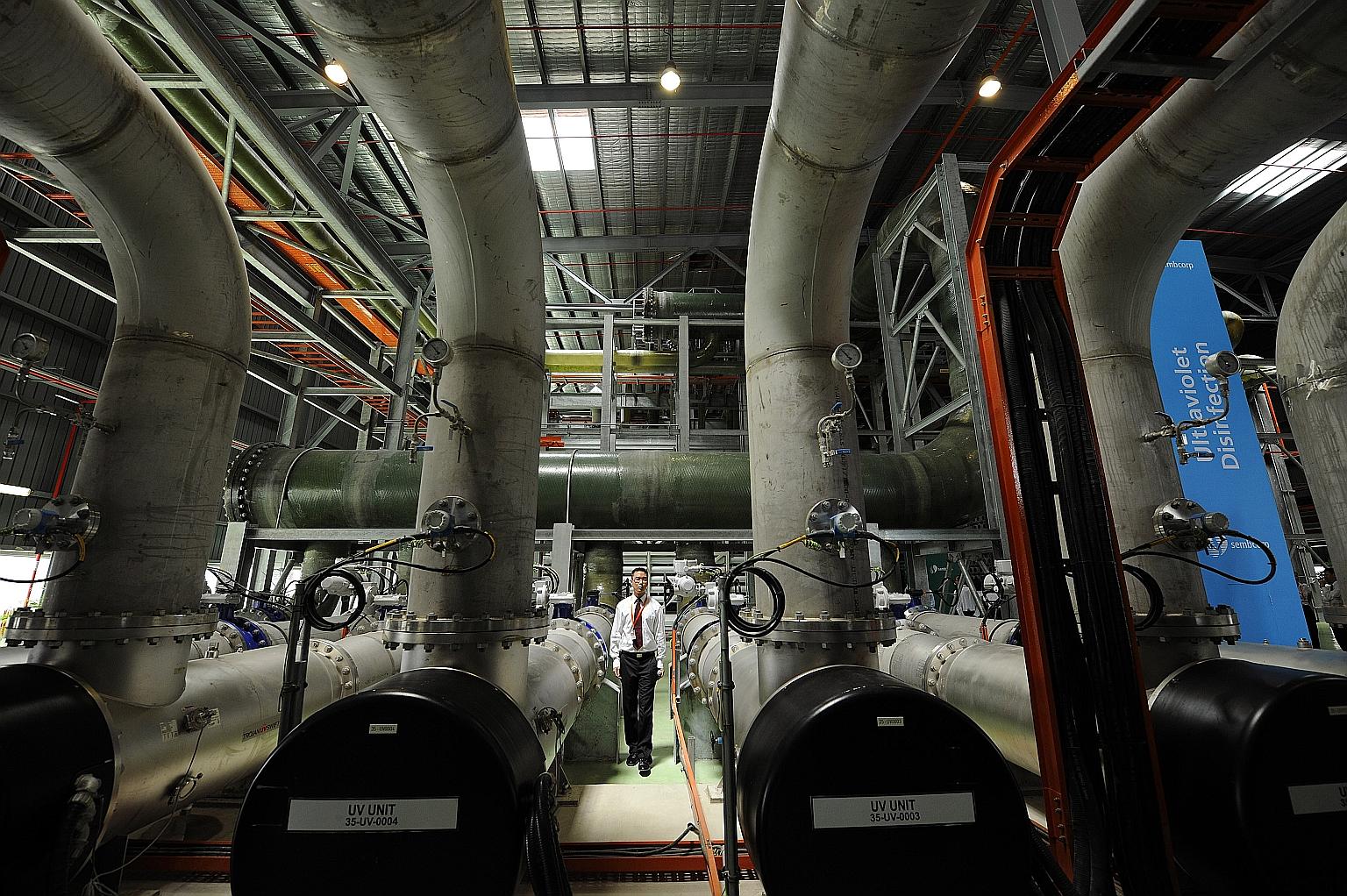Singapore gearing up for increasing water stress in Asia
Sign up now: Get ST's newsletters delivered to your inbox

A file photo of pipes used in the treatment of recycled water at the Sembcorp Newater plant. PUB said that by 2060, Singapore's water demand is expected to double from today's 430 million gallons a day. Singapore has four main sources of water - local catchments, imported water, Newater and desalinated water.
PHOTO: BLOOMBERG
Lin Yangchen
Follow topic:
In 2000, about 800 million people in mainland Asia faced severe water shortages. A study predicts that by 2050, about a billion more Asians will be in the same plight.
Singapore, however, has taken steps to insure itself against this scenario predicted by a Massachusetts Institute of Technology (MIT) study published on March 30 in the academic journal, PLoS ONE.
"Our demand for water will increase as our economy and population grow," said a spokesman for Singapore's water agency, PUB. "We will continue to plan and invest ahead of demand."
Dr Adam Schlosser, deputy director at MIT's Joint Programme on the Science and Policy of Global Change and one of the study's co-authors, said population and economic growth can have large effects on people's demand for resources. "And climate, on top of that, can lead to substantial magnifications to those stresses," he added.
The researchers used computer models to quantify the potential effects of population growth, economic expansion and climate change on patterns of water use in countries on mainland Asia. They simulated various scenarios up to 2050, including control "experiments" in which either population or climate was held constant over time.
The factors with the greatest impact on water availability vary by country. For example, increasing wealth alongside industrial growth was the main driver of water stress in China, while population growth was the main factor in India.
PUB said that by 2060, Singapore's water demand is expected to double from today's 430 million gallons a day. Singapore has four main sources of water - local catchments, imported water, Newater and desalinated water. The last two sources will eventually be able to supply up to 80 per cent of the country's future water needs, up from a maximum of 50 per cent today.
The importance of diversifying the water supply was underscored by recent dry spells in Malaysia that have reduced water levels in Johor's Linggiu Reservoir to just above the historical low of 41 per cent. Built and run by PUB, it is allowed by the Separation Agreement between Singapore and Malaysia to supply up to about 60 per cent of Singapore's current water needs.
Indeed, the MIT study said the effects of water shortages may be felt far from the source, such as when drought on an upstream river basin reduces the water supply to densely populated settlements elsewhere.
PUB said it will continue to develop new methods to minimise the cost and energy consumption of water production while enhancing the resilience of the water supply. To date, it has undertaken more than 400 such projects, investing a total of $320 million. It said it will keep encouraging the public to save water through outreach programmes and the use of water-efficient household fittings. Commercial water users that use 60,000 cubic m of water or more a year have to submit Water Efficiency Management Plans.
While Singapore was not among the countries in the MIT study, it faces similar challenges .
Professor Ng Wun Jern, executive director of the Nanyang Environment & Water Research Institute at Nanyang Technological University, said Singapore is "a water-stressed" country as it lacks natural freshwater sources and fossil fuel reserves. It has tried to overcome these limits via technology that allows the energy-efficient production of water. "The capabilities Singapore has built in the water domain can now be exported to the region, helping other countries address their water needs," he added.
This is already happening, said PUB, through events such as the biennial Singapore International Water Week conference, where Singapore shares its experience in overcoming its water vulnerabilities.

